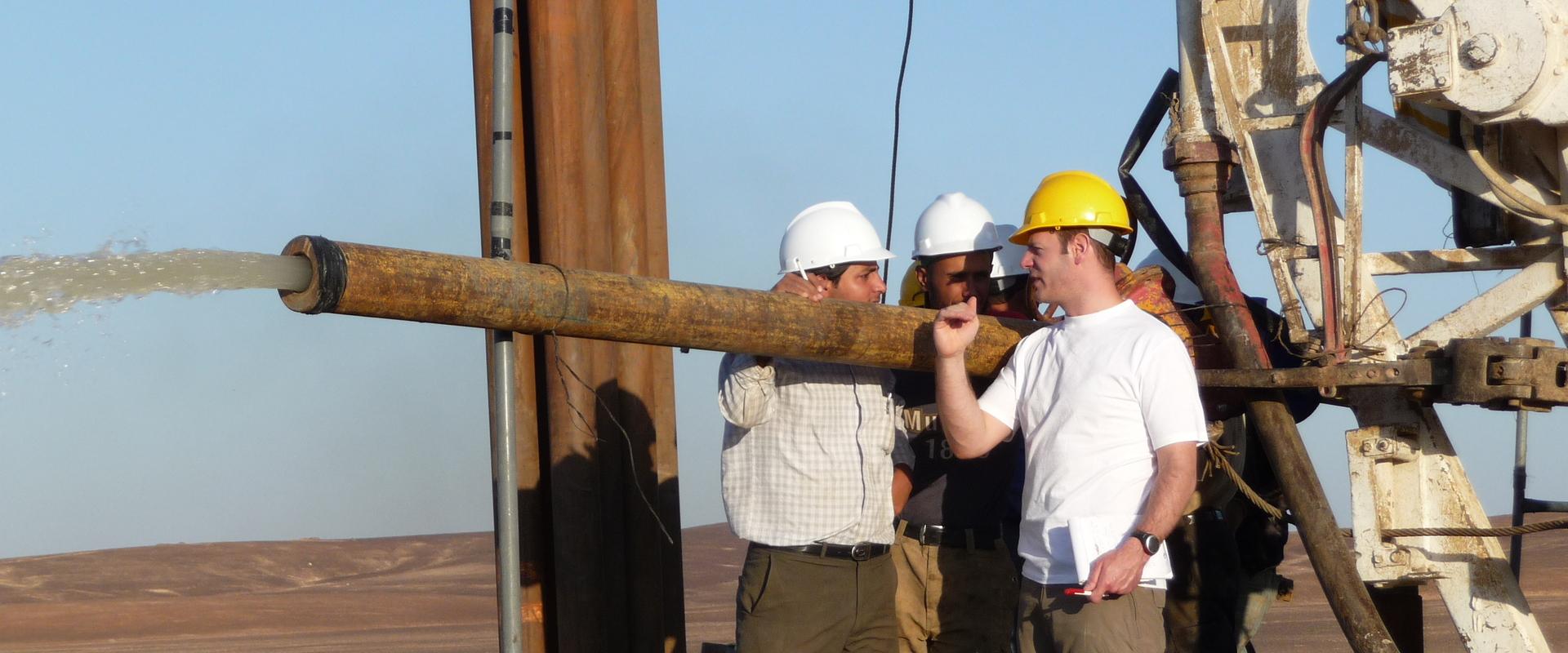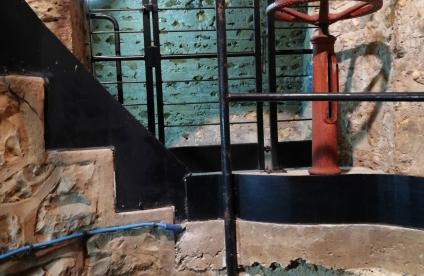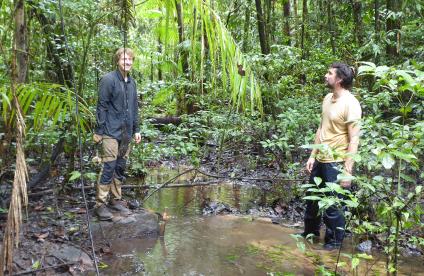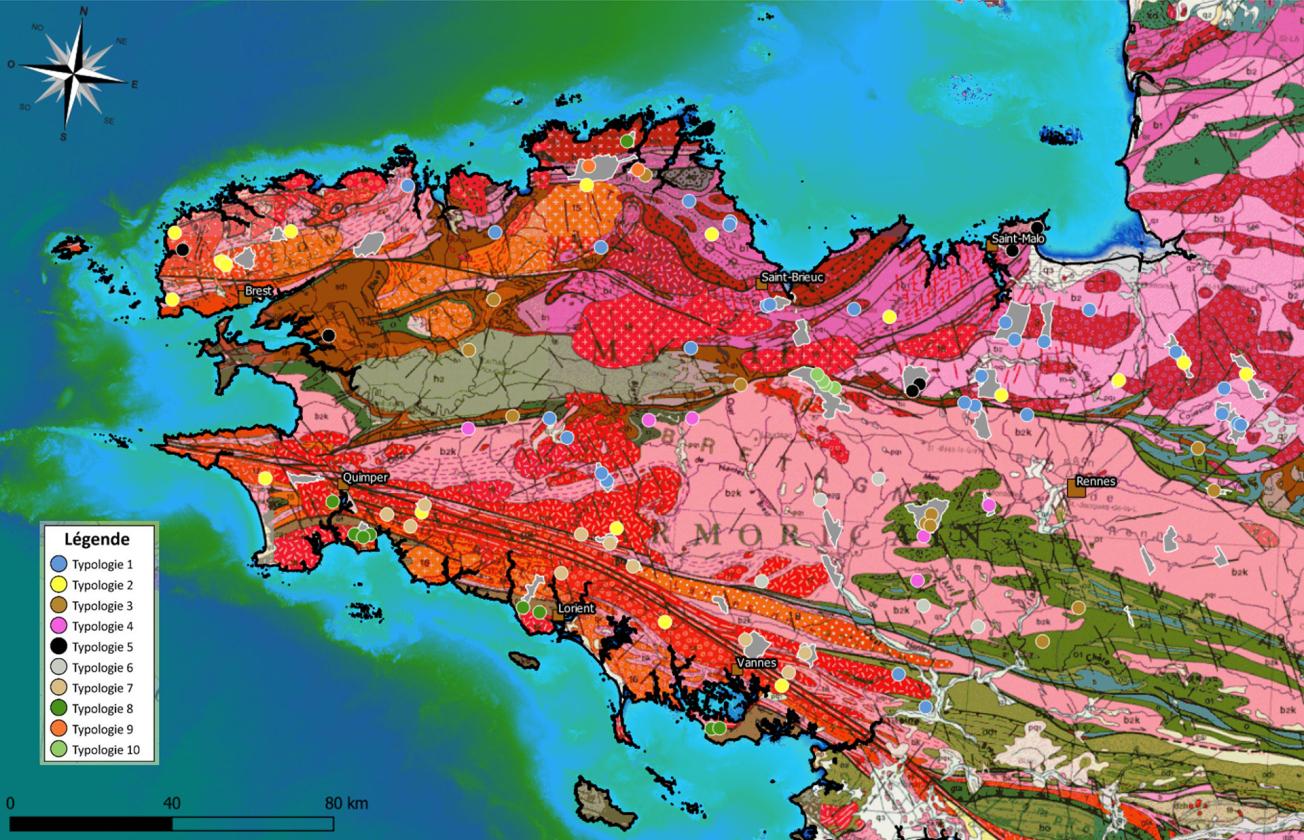
Distribution of the 100 most productive water boreholes in Brittany by hydrogeological type. Potentially productive zones (PPZ) are shown in grey (Schroetter et al., 2020).
© BRGM
The need
Faced with the threat from the impact of global climate change on water resources and in partnership with the Loire-Brittany Water Agency, the Brittany Regional Authorities and ARS Brittany, BRGM proposed to launch the ANAFORE project to identify areas with a high potential for production of good quality groundwater. These areas are intended to be put forward for classification as Aquifers to be Conserved for Drinking Water (NAEP) or as Areas for Protection for the Future (ZSF) under the future Loire Bretagne Blueprint for Water Development and Management (SDAGE) 2022-2027.
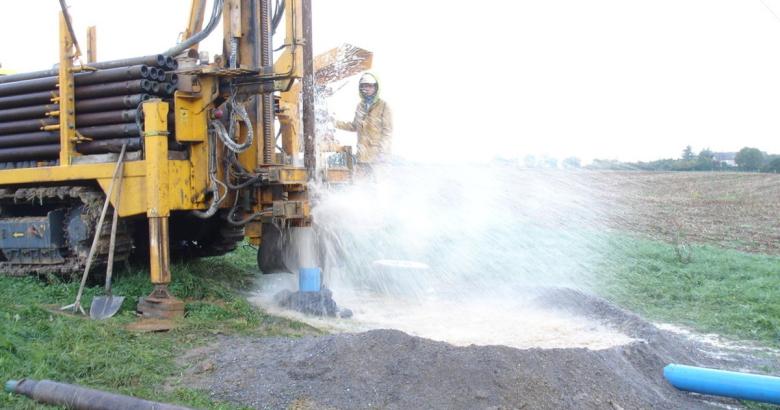
A productive borehole in Brittany (high instantaneous flow rate of 120 m3/h) (Fougères area, Ille-et-Vilaine, 2010).
© BRGM
The results
Under this project, 100 of the most productive boreholes in Brittany were studied in detail to identify their geological context by means of a multi-criteria analysis: nature of the surrounding rock, tectonic analysis (fracturing), degree of alteration and re-interpretation of geophysical data, but also their hydrogeological functioning (re-interpretation of pumping tests using the derivation method, water chemistry, etc.). A detailed description of each borehole was drawn up, including all the results. All these investigations identified ten favourable types characterised by faults/fractures, rock alteration or a particular or even unique geological context. This study finally identified 38 potentially productive basement areas to be conserved for drinking water production.
Using the results
The work carried out during the ANAFORE project represents a tool for anticipating land use planning decisions and for preparing and/or revising strategic water management documents, particularly the Loire Bretagne SDAGE. The 38 potentially productive areas identified have been put forward as NAEPs for the future Loire-Brittany SDAGE for 2022-2027. This would make it possible to conserve these groundwater resources for priority use. Outside these NAEPs, the search for new productive resources will be significantly improved on the basis of the identified types found and, more generally, the groundwater resources will be better understood and therefore preserved.

Proposing a map of the most productive good-quality groundwater resources so that they can be better preserved is of key importance in the context of climate change. These resources should be used only for drinking water supply or for purposes requiring water of very high quality.

